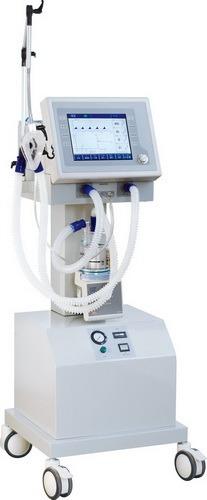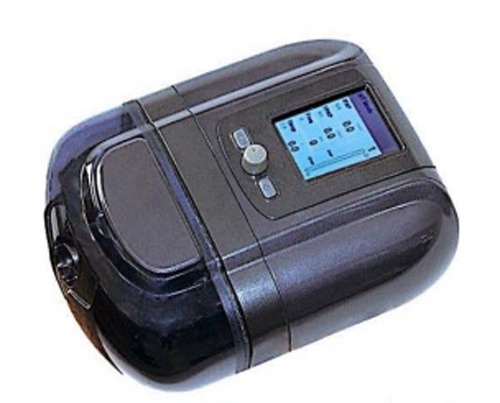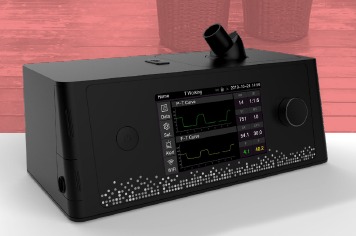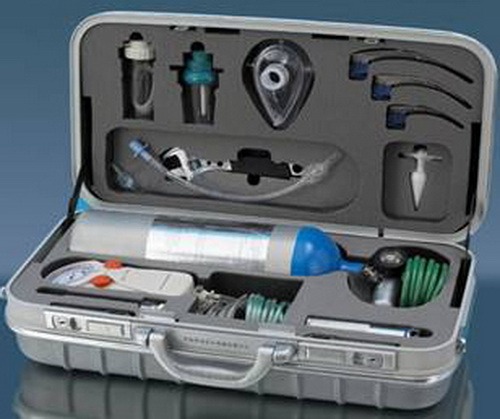Ventilators play a crucial role in modern medicine, especially in critical care units. Whether used temporarily during surgery or in severe respiratory cases, it's important to understand how they work, their benefits, risks, and the latest technology in this field.
1. Introduction to Ventilators
Ventilators are machines designed to assist or fully take over the breathing process when a person is unable to breathe on their own. This life-saving technology is essential in conditions where oxygen intake is compromised.
What is a ventilator?
A ventilator pumps air—usually oxygen-rich—into the lungs and helps the body maintain adequate oxygen levels. It can take over the entire breathing process or support patients in situations where breathing is labored or inefficient.
Key Functions of Ventilators
| Function | Description |
|---|---|
| Oxygen delivery | Provides controlled oxygen flow to the lungs. |
| Removing CO2 | Helps expel carbon dioxide from the lungs. |
| Breathing regulation | Controls the volume, pressure, and timing of breaths. |
2. Types of Ventilators
There are various types of ventilators used depending on the medical need.
| Type | Description |
|---|---|
| Invasive | Used in ICU with a tube inserted into the patient’s airway. |
| Non-invasive | Used with masks, typically for less severe cases (e.g., CPAP or BiPAP). |
| Portable | For at-home or emergency situations where patients can manage their breathing. |
Real-World Application
During the COVID-19 pandemic, ventilators were life-saving devices for patients with severe respiratory distress. In 2020, the demand for ventilators surged globally, with countries scrambling to ensure their ICU units were adequately equipped.
3. Common Scenarios Requiring Ventilators
Mechanical ventilators are typically used in situations where patients cannot breathe effectively on their own due to various medical conditions.
Medical Conditions That Require Ventilators:
- Acute Respiratory Distress Syndrome (ARDS)
- Severe Pneumonia
- Chronic Obstructive Pulmonary Disease (COPD)
- Neurological Injuries (e.g., spinal cord injuries)
Data Point:
A 2021 study published in the American Journal of Respiratory and Critical Care Medicine found that approximately 30-50% of ICU patients require some form of mechanical ventilation at some point during their stay.

4. Ventilators in the ICU: What to Expect
When a patient is placed on a ventilator, it's usually because they are critically ill and need breathing support.
FAQ: How Long Can a Patient Stay on a Ventilator?
The duration varies depending on the patient's condition. Short-term use (hours to days) is common after surgeries, while long-term use (weeks to months) might be necessary for chronic conditions.
Common Risks of Long-Term Ventilation:
- Ventilator-associated pneumonia (VAP)
- Barotrauma (lung damage due to high pressure)
- Muscle atrophy (due to prolonged immobility)
| Risk | Prevention |
|---|---|
| Ventilator-associated pneumonia | Frequent suctioning and hygiene. |
| Barotrauma | Careful monitoring of ventilator settings. |
| Muscle atrophy | Physical therapy and regular repositioning. |
5. Weaning Off the Ventilator
Weaning a patient off the ventilator is a gradual process that involves reducing support as the patient's ability to breathe independently improves.
How Long Does It Take to Wean Off?
In most cases, the process takes a few hours to days, but in severe cases, it could take weeks. The success of weaning often depends on underlying health issues and strength regained during ICU care.
Real-Life Case Study:
A patient with COPD required ventilation for two weeks after suffering from respiratory failure. Gradual reduction in ventilator support over a three-day period allowed successful weaning, coupled with physical therapy.
6. Ventilators During the COVID-19 Pandemic
Ventilators were in the spotlight during the COVID-19 pandemic. For many severe COVID-19 cases, ventilation was the last resort when patients experienced critical breathing issues.
Key Facts:
- Early in the pandemic, ventilator shortages were a major issue worldwide.
- COVID-19 patients who were placed on ventilators had varying outcomes, with survival rates depending largely on the timing and condition before ventilation.
| Year | Global Ventilator Demand |
|---|---|
| 2019 | 1 million units |
| 2020 | 4.5 million units |

Portable Non-Invasive Ventilator For Covid-19
7. Risks and Side Effects of Ventilator Use
While ventilators save lives, there are associated risks that medical teams must manage.
Complications from Ventilation:
- Lung injury: High pressures can cause damage to lung tissues.
- Airway damage: Prolonged use of an intubation tube can lead to scarring or infection.
- Infections: Ventilators increase the risk of infections such as pneumonia.
8. Family Concerns: What Should You Know When a Loved One is on a Ventilator?
When a loved one is on a ventilator, families often have numerous concerns.
- What are the chances of recovery while on a ventilator?
- How will we know if they can be weaned off the ventilator?
- Are there alternatives to mechanical ventilation?
It’s vital to have clear communication with the medical team. Families should request regular updates and understand the patient's progress and any complications.
9. Frequently Asked Questions
- Can a ventilator be used at home?
Yes, in some cases, patients with chronic respiratory conditions can use non-invasive ventilators at home. - What happens if a patient cannot be weaned off the ventilator?
In cases where weaning fails, a tracheostomy may be considered to provide long-term ventilator support with fewer complications than intubation.
Ventilation Alternatives at Home
| Device | Use |
|---|---|
| CPAP (Continuous Positive Airway Pressure) | Sleep apnea and some lung disorders. |
| Portable ventilator | For chronic conditions like ALS (amyotrophic lateral sclerosis). |

10. Conclusion: Key Takeaways
Ventilators are vital life-saving devices, but their use comes with risks that must be carefully managed. Families should stay informed, asking questions and ensuring that patients are receiving the best care possible.
By understanding the different types, uses, and risks associated with ventilators, you can navigate this complex medical field with confidence.
→Click here to learn more about our ventilator
or
